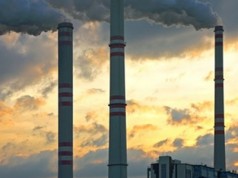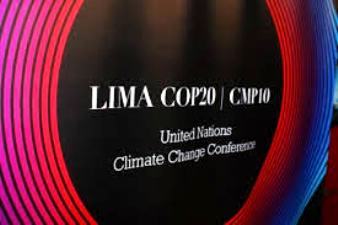New York – Year 2009 was a tumultuous year for the voluntary carbon markets, which saw transactions equivalent to 94 million tons of carbon dioxide emissions reductions, a 26% drop compared to 2008, according to the fourth annual State of the Voluntary Carbon Market Report issued 14th June 2010 by Ecosystem Marketplace and Bloomberg New Energy Finance. The total value of traded credits declined 47% to US $ 387 million in 2009 and the average price of an emission reduction was $ 6.5/tCO2e.
Although the economic downturn reduced offset purchasing for corporate social responsibility, the report notes significant growth in the pre-compliance segment of the voluntary markets. These are speculative credits bought in anticipation of a cap-and-trade program in the US, which accounted for the greatest market share of supply (56%) and demand (49%) of voluntary carbon credits in 2009.
Forest Trends’ Ecosystem Marketplace Director and report co-author Katherine Hamilton said, “Voluntary markets play a critical role in market innovation, and they are becoming more efficient and transparent as participants forge deeper connections with each other. It is encouraging that even with the dual hit of regulatory uncertainty and tightened budgets for offsetting in 2009, the industry has continued to evolve, forming linkages that create a more efficient market infrastructure.”
Bloomberg New Energy Finance Director and report co-author Milo Sjardin said, “The economic recession had a marked impact on the part of the market primarily concerned with buying credits to offset emissions of companies and individuals. In contrast, expectations of a possible US carbon trading program lifted the importance of the US, which figured as the largest buyer and seller in the market and the most popular transactions were those that could count towards future compliance. However, with the current state of play of US politics this situation is likely to be very different this year.”
The survey found a near doubling in the use of independent, third-party “registries”, which track ownership of offsets so that individual emission reductions are not counted twice. The survey identified 17 registries accounting for 51% of all voluntary offset transactions last year, while just 29% of transactions were listed with registries in 2008. The survey attributes the growth in registry uptake largely to the emergence of multiple registries spread across different regions, which issue credits and track ownership.
The most popular project types were those that destroy methane – a greenhouse gas that traps more than 20 times as much heat as carbon dioxide. These projects stand a good chance of being grandfathered into a US compliance scheme, and they accounted for 41% of voluntary offset transactions in 2009. Forestry projects were next, at 24%, followed by renewable energy projects, at 17%. The US took the lead from Asia this year as the source of the vast majority of offset credits (56%), followed by Latin America (16%) and Asia (12%).
This fourth annual “State of the Voluntary Carbon Markets” report is designed to give a market-wide perspective on trading volumes, credit prices, project types, locations, and the motivations of buyers in this market. Findings are based on data voluntarily reported by over 200 offset suppliers, as well as exchanges and registries. Because of the challenges of inventorying and obtaining data from this disaggregated marketplace, numbers presented should be considered conservative.
The report is made available to the public without charge with support from Ecosystem Restoration Associates and Forest Carbon Group and sponsors Baker & McKenzie, Sustainable Carbon, Karbone, EcoSecurites, Orbeo, and Evolution Markets.
Click here to read/download the Full Report.
Source: Ecosystem Marketplace.
About Ecosystem Marketplace
Ecosystem Marketplace, a project of the non-profit organization Forest Trends, is a leading source of information on environmental markets and payments for ecosystem services. Their publicly available information sources include annual reports, quantitative market tracking, weekly articles, daily news, and newsletters designed for different payments for ecosystem services stakeholders. They believe that by providing solid and trustworthy information on prices, regulation, science, and other market-relevant issues, they can help payments for ecosystem services and incentives for reducing pollution become a fundamental part of our economic and environmental systems, helping make the priceless valuable.
About Bloomberg New Energy Finance
Bloomberg New Energy Finance is the world’s leading independent provider of news, data, research and analysis to decision-makers in renewable energy, carbon markets, energy smart technologies, carbon capture and storage, and nuclear power. The group has staff of more than 130, based in London, Washington D.C., New York, Beijing, New Delhi, Cape Town, São Paulo, Singapore and Sydney.



















